
Salty Sam’s Fun Blog for Children
Number 259
Aesop’s Fables
Hello Everyone

Very often on a Friday afternoon Miss Pringle treats her class to a story time.
This week she read the class some of Aesop’s Fables.
Have you ever heard of these stories?
Have you ever read one?
lf you have, you may not realize that Aesop lived a very, very long time ago.
Aesop was a story teller who lived in Ancient Greece. He was born in about 620 BC, which of course is well over 2,000 years ago.
Some people believe he lived on the Greek island of Samos. Some people are not sure whether he actually existed.
The name Aesop is pronounced ‘Ee-sop’.
lt is said that he was actually born a slave. ln those days a lot of people were kept as slaves. That means that they were owned by a particular person or family.
Aesop developed a talent for story-telling. The particular type of story he told is called a fable. These stories were designed to teach people about the morals of life – simple truths about how life is and how people should behave properly.
The stories are told in such a way that the message is very understandable.
Although Aesop was famous for his story telling, it is very probable that he did not actually invent all the stories that he told. He would probably have used stories that were already around. These stories are what we call ‘common stock’.
Chaucer and Shakespeare probably also used stories that they would have heard from other sources. These stories are now attributed to them because they made them so famous.
Some people question whether Aesop, as a man born into slavery, could have attained such attention and fame, but he was spoken about by famous men of the time like Aristotle and Plutarch, so it is possible that he was born a slave but later gained his freedom.
His stories have been translated into many languages and are now famous all over the world – and there are many, many of them.
Some are more famous than others and some of them are really very short.
You may have heard of the story called The Boy who Cried Wolf, for example.
lt is about a shepherd boy who worked out in the fields and repeatedly cried out for help to the nearby villagers. He tells them that a wolf is about to attack the flock of sheep in his care. Again and again they come to his aid only to find that he has tricked them.
When a wolf really appears and he cries for help, they ignore him thinking that it is yet another false alarm.
The moral of the story is that if you keep telling lies and are found out, afterwards no one will believe you when you are telling the truth. You may even be in danger and desperately need help, but no one will believe you because you have gained a reputation for being a liar.
Another story that you might know is about a race between a tortoise and a hare.
Hare raced far ahead and, because he was so sure that he would win the race he stopped for a nap. Slow but steady Tortoise just kept on walking and plodded past the sleeping hare and won the race.
The moral of this story is, of course, that you have to make an effort to make sure you make a success of something.
You should not take anything for granted.
Aesop’s stories often have animals and inanimate objects (things) that talk and have human characteristics. The characters in the stories interact with each other. They solve problems; they have emotions, fears and worries. Sometimes they behave badly and pay for their mistakes!
The strange thing is, that although these stories are so ancient they resonate with people today. This must prove that in all those hundreds of years since Aesop lived, human nature couldn’t have changed much!
People keep recounting the stories because they kept being relevant.
You might like these stories too. Have a look out for them next time you go to the library or check them out online.
Bye bye everyone – don’t forget to subscribe to my blog!
lf you like my blog, please support it by telling all your friends and followers about it.
Thank you!
And see you again next Fun Friday!
Love and kisses
Salty Sam

www.christina-sinclair.com
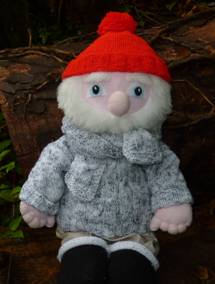

Bill and Bob’s Joke of the Week![]()
![]()
Bill: What does every winner lose in a race?
Bob: l don’t know. What does every winner lose in a race?
Bill: Their breath!
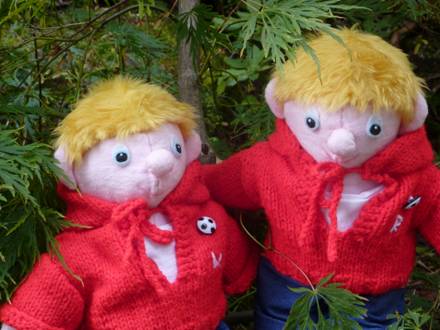
Salty Sam © Christina Sinclair 2015
Unauthorized use and/or duplication of material from this blog without express and written permission from this blog’s author and owner is strictly prohibited.
Links may be used to www.christina-sinclair.com

Picture Gallery
 Aesop
Aesop
 Shakespeare
Shakespeare
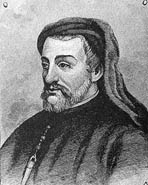
Geoffrey Chaucer
 The Grasshopper and the ant
The Grasshopper and the ant


 THE SALTY SAM NEWS DESK
THE SALTY SAM NEWS DESK

It is not the season for circuses to travel really, but as Farmer Jenkins allowed a travelling circus to stay on his land for part of the winter, in thanks they put a special display on for the residents of Rocky Bay in one of his big barns.
It was a real treat to see such a colourful show in the middle of a gloomy winter’s day!
I have more to tell you about a very famous circus act next week. Can you guess who it will be?
In the meantime I have a puzzle for you.
These are the things that we saw in the circus ring…
- T_a_e_e a_t_s_s
- C_o_n_
- R_n_ m_s_e_
- A_r_b_t_
- D_n_i_g d_g_
- J_g_l_r_
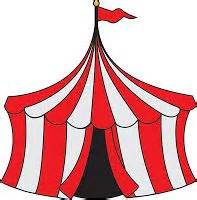

*********************
TO ADVERTISE ON THIS BLOG
PLEASE CONTACT:
christina.sinclair.ads@aol.co.uk
*********************


Quick Quiz
What do these words and expressions mean?
- ln a word
- ln other words
- Famous last words
- Actions speak louder than words
- You took the words right out of my mouth




lt’s the Weekend!

HOW TO MAKE A PAlR OF HAND CUFF GLOVES
Knitting gloves when you are a knitting newbie is quite difficult because knitting the fingers onto the hand part is not very easy.
This pattern will keep your hands warm and is very easy to do.
They match the legwarmers on Blog Post 207.
Even if you are very slow knitter you must have finished them by now!
HANDCUFF GLOVES (KNIT TWO)
LARGE CHILD
Using 3¾mm knitting needles and green dk yarn cast on 34 stitches
Slip 1, knit 2 (p2, k2) to last 3 stitches, p3
Repeat this last row 15 times (16 rows of rib)
Change to 4mm knitting needles
Increase 2 stitches at the beginning of the next row (36 sts)
Knit 2 (p1, k1) repeat the last 2 stitches to the end of the row
Increase 1 stitch at the beginning of the next row (37 sts)
Knit 2, purl 1 (k1, p1) repeat last 2 stitches to the end of the row
S1 (k1, p1) repeat last 2 stitches to the end of the row
When you have knitted 40 rows of moss stitch cast off
Sew up inner side seam 8cm from the bottom and 6cm down from the top to leave a gap for your thumb to poke out.
HANDCUFF GLOVES (KNIT TWO)
SMALL CHILD
Using 3¾mm knitting needles and green dk yarn cast on 26 stitches
Slip 1, knit 2 (p2, k2) to last 3 stitches, p3
Repeat this last row 11 times (12 rows of rib)
Change to 4mm knitting needles
Increase 2 stitches at the beginning of the next row (28 sts)
Knit 2 (p1, k1) repeat the last 2 stitches to the end of the row
Increase 1 stitch at the beginning of the next row (29 sts)
Knit 2, purl 1 (k1, p1) repeat last 2 stitches to the end of the row
S1 (k1, p1) repeat last 2 stitches to the end of the row
When you have knitted 30 rows of moss stitch cast off
Sew up inner side seam 6cm from the bottom and 3cm down from the top to leave a gap for your thumb to poke out.
Try the gloves on to see whether the thumb hole is in the right place for you before you finish sewing up the gloves.
TIP
If you don’t want to use moss stitch to make these gloves, you could knit them in garter stitch instead – just cast off when you can see that the gloves are long enough for you.

Please note that the material on this blog is for personal use and for use in classrooms only.
It is a copyright infringement and, therefore, illegal under international law to sell items made with these patterns.
Use of the toys and projects is at your own risk.
©Christina Sinclair Designs 2015

Answers to the News Desk Quiz
- Trapeze artists
- Clowns
- Ring master
- Acrobats
- Dancing dogs
- Jugglers



Quick Quiz Answers
- ln a word – to say something in a condensed way
- ln other words – to repeat something you have just said but saying it in a different way
- Famous last words – (a phrase that expresses disbelief) because it is referring to something that was announced and then the opposite happened
- Actions speak louder than words – if you do something it means more than just saying that you will do it
- You took the words right out of my mouth – l was just about to say the same thing
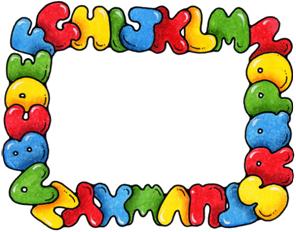



Thanks for this post, it has been incredibly useful to me! Much better written than anything else out there.
Thank you Mann!